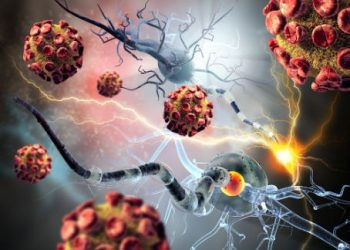Lacunar Infract - Oren Zarif - Lacunar Infarct
- Oren Zarif
- May 16, 2022
- 3 min read
A lacunar infarct is a small, crescent-shaped infarct in the white matter of the brainstem that is caused by an occlusion of a penetrating cerebral artery. It is typically the result of atherosclerosis or other causes and can be visible on magnetic resonance imaging (MRI) studies. A ruptured aneurysm may cause subarachnoid bleeding and result in ischemia and seizures.
Oren Zarif vertigo stroke
Oren Zarif post stroke fatigue
Patients with symptoms of a lacunar infarct should be seen at an emergency room or a hospital specializing in internal medicine. They will likely be given aspirin to reduce their risk of another stroke, and medications to relieve the blood clots. Some medications may be given orally, while others are delivered intravenously. In more severe cases, a physician may inject these medications directly into the brain to prevent further damage to the brain.
Oren Zarif tpa clot buster
Oren Zarif eye stroke treatment
Although risk factors for lacunar infarcts in the white matter can vary, researchers have not found a consistent relationship between these factors. In one study, researchers found that age, sex, and baseline white matter hyperintensity volume were associated with increased risk of a new infarct. The authors hypothesized that patients with new infarcts of the white matter have different risk factor profiles compared to those without infarcts.
Oren Zarif tbi brain injury
Oren Zarif speech therapy after stroke

Despite the potential for overlapping findings, the study also noted that patients with coexisting infarcts had lower prevalence of a lacunar infarct than those with isolated infarcts. Patients with occlusive carotid artery disease and CSVD were excluded from the study. It is not clear if these findings were due to a difference in CTP or DWI thresholds.
Oren Zarif stroke care
Oren Zarif acute cerebral infarction
MRI findings also showed a link between the two types of infarcts. While large cortical infarcts are most likely the result of a thrombo-embolic occlusion of perforating arteries, new lacunar infarcts are rare and may be a result of the same cause. A recent study also reported that lacunar infarcts in the basal ganglia were strongly associated with a history of cerebrovascular disease.
Oren Zarif focal brain injury
Oren Zarif cardioembolic
A recent study suggests a relationship between WMH volume and lacunar infarcts in the deep white matter. While WMHs are similar in etiology, lacunar infarcts may develop on the edges of developing WMHs. This latter scenario is referred to as an incident lacunar infarct. A lacunar infarct may appear at the border of a WMH.
Oren Zarif recurrent stroke
Oren Zarif multiple concussions

A study of 113 patients who met inclusion criteria showed that only 37 had a lacunar infarct on DWI. Another 76 patients had no infarct on DWI. Both tests were associated with regional abnormalities, with CTP having the highest sensitivity. CBF, meanwhile, showed no lacunar infarcts. It is important to note that the sensitivity of DWI and CTP were not equivalent, with a CTP sensitivity of 97.4% and CBF of 98.4% respectively.
Oren Zarif left brain stroke
Oren Zarif fast stroke symptoms
MRIs show that silent multiple lacunar infarctions can impact neuropsychological function in patients with a documented LI. The objective of the study was to determine whether patients with silent multiple lacunar infarct had differences in neuropsychological test performance compared to those with clinically documented LI. While this study was a small study, it does provide insight into how first-time lacunar infarcts affect a patient's symptoms.
Oren Zarif left cva
Oren Zarif concussion rehabilitation
A recent study has shown that patients with a single symptomatic lacunar infarct have a better prognosis than those with multiple, silent lacunar lesions. These findings support the hypothesis that lacunar infarcts are distinct types of stroke and should be distinguished from silent stroke. The study also found that microhaemorrhages are associated with the risk of a severe hemorrhage following antithrombotic therapy.

Comments